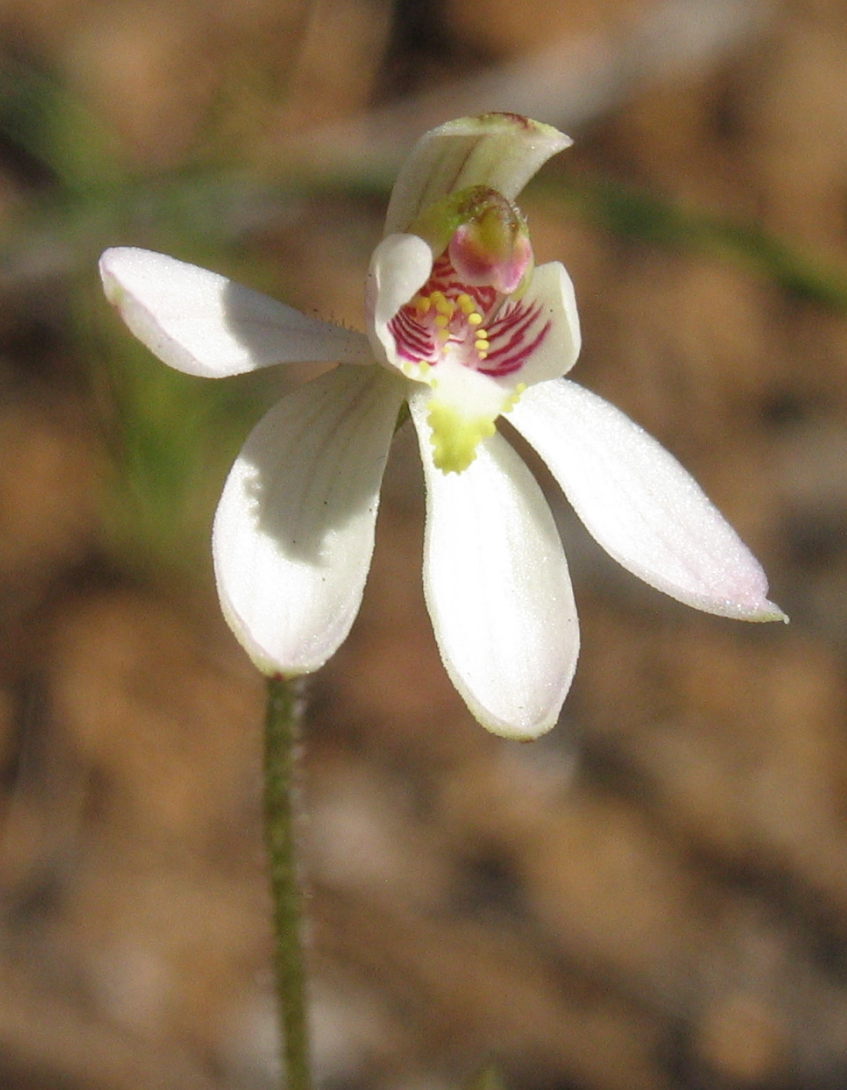Caladenia pusilla
W.M.Curtis Pygmy CaladeniaFlowering plant stout, 4–10 cm tall. Leaf linear, 3–6 cm long, shorter than flowering stem, c. 2 mm wide. Flower solitary, pink, centre whitish, brownish pink externally; ovary 4–6 mm long; dorsal sepal incurved, linear, 5.5–7 mm long, c. 2.5 mm wide, usually less than 3 times as long as broad, apex bluntly acute to obtuse; lateral sepals partly or wholly fused, parallel, sometimes asymmetric, linear-lanceolate, 5.5–7 mm long, 2–2.5 mm wide; petals spreading, 5–6 mm long, c. 2 mm wide. Labellum sessile, 3-lobed, 4–5 mm long, 4–5 mm wide (when flattened), white or pink with prominent transverse red bars; lateral lobes prominent, broad, margins entire, anterior margin rounded; mid-lobe small, recurved, triangular, entire or with a few short marginal calli, yellow at apex; lamina calli in 2 rows nearly to base of mid-lobe, stalked and clubbed, yellow. Column incurved, narrowly winged, barred with dark-red; anther with a long point. Flowers Oct.–Nov.
Wim, GleP, VVP, GipP, OtP, Gold, CVU, GGr, DunT, NIS, EGL, WPro, HSF, HNF, Strz. Also SA, NSW, Tas. New Zealand. Widespread but localised in Victoria, mostly in damp heathland and woodland near the coast and dry sclerophyll forest inland, often on well-drained sandy soils.
Similar to Caladenia mentiens but that species has longer, more slender flower stems.
Entwisle, T.J. (1994). Orchidaceae. In: Walsh, N.G.; Entwisle, T.J., Flora of Victoria Vol. 2, Ferns and Allied Plants, Conifers and Monocotyledons, pp. 740–901. Inkata Press, Melbourne.
 Spinning
Spinning


